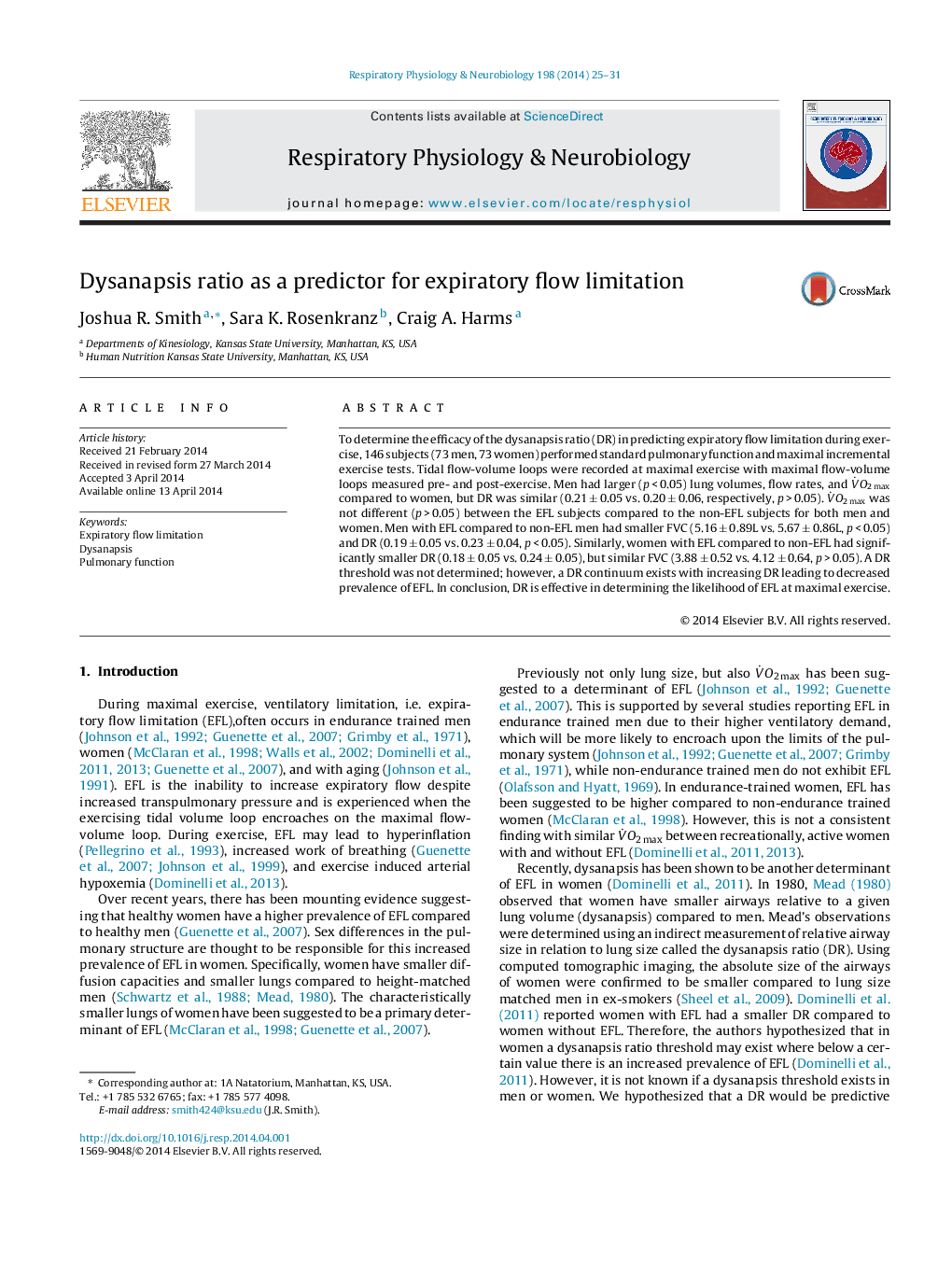| کد مقاله | کد نشریه | سال انتشار | مقاله انگلیسی | نسخه تمام متن |
|---|---|---|---|---|
| 5925958 | 1571330 | 2014 | 7 صفحه PDF | دانلود رایگان |

- We determined whether a dysanapsis threshold occurs to predict expiratory flow limitation.
- Larger dysanapsis ratios were associated with decreased odds of expiratory flow limitation.
- Dysanapsis ratio can be used to predict expiratory flow limitation particularly in women.
To determine the efficacy of the dysanapsis ratio (DR) in predicting expiratory flow limitation during exercise, 146 subjects (73 men, 73 women) performed standard pulmonary function and maximal incremental exercise tests. Tidal flow-volume loops were recorded at maximal exercise with maximal flow-volume loops measured pre- and post-exercise. Men had larger (p < 0.05) lung volumes, flow rates, and VËO2max compared to women, but DR was similar (0.21 ± 0.05 vs. 0.20 ± 0.06, respectively, p > 0.05). VËO2max was not different (p > 0.05) between the EFL subjects compared to the non-EFL subjects for both men and women. Men with EFL compared to non-EFL men had smaller FVC (5.16 ± 0.89L vs. 5.67 ± 0.86L, p < 0.05) and DR (0.19 ± 0.05 vs. 0.23 ± 0.04, p < 0.05). Similarly, women with EFL compared to non-EFL had significantly smaller DR (0.18 ± 0.05 vs. 0.24 ± 0.05), but similar FVC (3.88 ± 0.52 vs. 4.12 ± 0.64, p > 0.05). A DR threshold was not determined; however, a DR continuum exists with increasing DR leading to decreased prevalence of EFL. In conclusion, DR is effective in determining the likelihood of EFL at maximal exercise.
Journal: Respiratory Physiology & Neurobiology - Volume 198, 1 July 2014, Pages 25-31